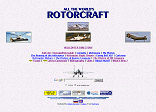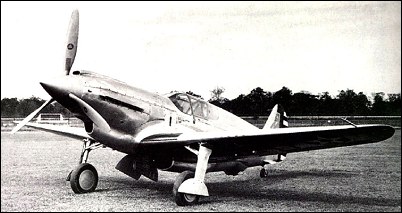|
| The XP-46 of 1939 was a late attempt by Curtiss to capitalize on lessons from early fighting in Europe and to develop a fighter powered by an inline engine which could succeed the P-40 Warhawk on production lines. The lacklustre performance of the Curtiss XP-37 and XP-42 designs was yet to become fully apparent on 29 September 1939, when this most promising of the three Curtiss designs was ordered in prototype form. The US Army ordered one XP-46 and one XP-46A, the latter without armament to expedite the testing programme. Both were powered by the 857kW Allison V-1710-39 inline engine, which promised to be readily available if production materialized, being the powerplant for the P-40D already on factory lines. The XP-46A flew first on 15 February 1941 and both machines were being tested by the time of Pearl Harbor. The XP-46 and XP-46A had moderately good performance except for
their limited range of 523km. They were heavier and costlier than the P-40D, however, and seemed to lack 'stretching' potential for further development. The two airframes were markedly different from each other in detail, especially in cockpit layout, the XP-46 being viewed by pilots as cramped and uncomfortable, a 'sweatbox'. Clearly the two machines added knowledge, but a production order eluded them.
 | A three-view drawing (1280 x 964) |
| MODEL | XP-46A |
| WEIGHTS |
| Take-off weight | 3320 kg | 7319 lb |
| Empty weight | 2550 kg | 5622 lb |
| DIMENSIONS |
| Wingspan | 10.46 m | 34 ft 4 in |
| Length | 9.19 m | 30 ft 2 in |
| Height | 3.96 m | 13 ft 0 in |
| Wing area | 19.32 m2 | 207.96 sq ft |
| PERFORMANCE |
| Max. speed | 571 km/h | 355 mph |
| Ceiling | 8990 m | 29500 ft |
| Range | 523 km | 325 miles |
| Klaatu83, e-mail, 27.07.2012 02:52 The P-46 was intended to be the successor to the P-40C, known to the British as the Tomohawk. However, plans to produce the aircraft were cancelled when it was found that the P-46 didn't perform any better than the P-40D, which the British called the Kittyhawk. In addition, the P-40D Kittyhawk had the advantage if utilizing many of the existing P-40 components, so it was an aircraft which required a great deal less time and effort to place into mass production. reply |
|
Do you have any comments?
|
| 
COMPANY
PROFILE
All the World's Rotorcraft
|







